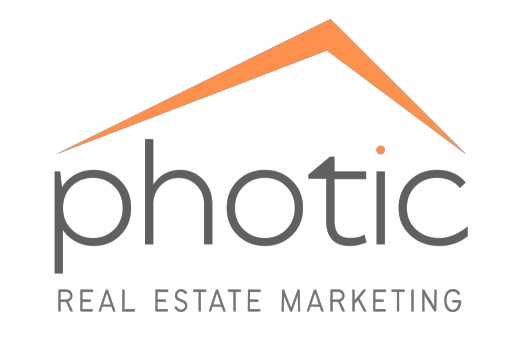From photography to videography and drone imagery, you want the best real estate photography in the business to sell your home without breaking the bank. Our industry insiders share their expert advice for how you can market your listing with these key elements.
1. Photography
The most important thing about photography is that you should always be learning. When you learn a new skill, you’ll find there’s always a better way to do something, and that you’ll want to keep learning new things. The importance of shooting homes is pretty boosted by the complications that each home can have. Complex homes can have so many moving parts and components that shooting them with a single lens can be tricky, to say the least. Photographing complex homes can be complex too. This is especially true of logos and illustrations that extend far into extra dimensions. It means understanding how light behaves at different points that compose an object. Manual focus can be tricky on homes. You can usually have good manual focus with an old school prime lens in good lighting conditions. However, sometimes the focus needs adjusting in postprocessing, and sometimes the product is so complex that you’ll need multiple shots to photograph everything. With those situations in mind, having multiple camera options for product photography is essential. For a lone operator who doesn’t want to worry about working on a tripod or focusing manually for most of the time, a long zoom lens is essential.
2. Videography
Videography is a great way to add depth to your home and your videos will be a great supplement to any sale post. It’s also a great way to tell people what you’re up to and what you’re working on. First let’s look at the gear you’ll need. You might decide to skip this if you don’t have a GoPro, but I encourage you to do this part. I personally recommend the GoPro HERO6 if you plan to edit your videos for web. The reason for this is that this camera can easily shoot 4k, but your web host may not accept higher resolution, which is important for the audio. You can download and import your footage into Adobe Premiere, but you’ll have to connect your GoPro using USB and then download the footage. However, you can instead just output your.AVI file directly to your webserver using Google Cloud Stitcher. Personally, I haven’t had problems with it when I’ve used VirtualBox and VMWare Fusion to work with it. For those, however, who are not interested in editing, just skip this and continue with the tutorial in Step 3, below. If you are interested in editing your video, you will need a few pieces of equipment: Here we go. Use Chrome or Firefox as your browser. Allow pop-ups, and other such security controls. Install GIMP. I personally use Icecream, though others swear by Pexels.
3. iGuides
iGuides are a great tool for your blog because they’re free and give you the opportunity to write about any topic you want. You can use them for guest posts, product reviews, or even just answering questions that your customers might have. I’ve noticed recently that there are a lot of people willingly taking my Guided Post on YouTube videos, which are mostly 1:1 transcriptions from my YouTube videos. I believe this is because, from a marketing standpoint, they have the same goal and objective as The Guided Post, and they understand that. For my YouTube videos, I’ve mainly been doing a 30-second guide with a link to my video. People who watch our YouTube videos know my commitment to quality and are willing to watch the longer versions of my videos that are also tailored specifically for YouTube. We have noticed that most of our visitors come directly to my YouTube channel, that’s because my videos are meant for YouTube. I encourage you to think about the audience and purpose of your content. Do you want people to read your blog post at your website? Do you want them to watch your YouTube video on your channel? My content is always meant for the audience at my website. So when I upload a new video on YouTube that’s a totally different experience for them compared to a blog post, which is mostly a one-to-one experience. I don’t know about you, but in many of my videos, I don’t include links to my articles because I feel like these videos are meant for YouTube just as much as they’re meant for my blog. I’ve noticed that I’m connecting more with my YouTube audience, who are typically younger than my blog audience.
4. Drone Imagery
The use of drone imagery is a great way to showcase your product in the most appealing way possible. It’s also a great way to capture a product that would normally be too large or too expensive to fit in a studio. It’s also a great way to capture shots from a different angle so that customers can get a different perspective on the product. Whether you’re going to use it for product advertisement, call center marketing, product photography, or virality, there are lots of reasons to use a drone. So if you’re considering one, here’s a step-by-step guide on how to take perfect product photos with a drone. While technically any durable, handheld camera would work great for this job, usually professional DSLR cameras have much more flexibility and power. Because of this, they’re also ideal for both consumer and enterprise applications, and all you need to buy is the right camera. You want a camera with a good sensor and stabilization (if applicable) such as the Canon G7 X Mark II and above. I don’t always go this route, but my personal recommendation would be the Panasonic GH4 for its wide range of capabilities, good resolution, and respectably low price (depending on availability in your region). If you want to get more specific, there’s a plethora of great options from professionals like the Nikon D750 and Canon EOS75D. Once you’ve narrowed down the list of cameras, you eventually will need to pick a tripod. You can go with just about any type (PSU-less, fully featured) but a few essentials are a) one with good legibility for product placement, and b) one that can lock firmly to the drone’s position. Other things that can make the difference include- The ratio between your camera’s sensor and lens is very important. Lenses are generally a fixed focal length. Their number is indicated in millimeters. For example, a 35 mm lens (when set to 35 mm) has a “35 mm” focal length, meaning that it has a fixed length of 35 millimeters in any direction. So, if you want to take photos that are roughly 3 x 3.
5. An Interview With A Photographer On The Importance Of Getting The Right Images
Does your photographer understand you? Believe in you? Are they a good “fit” for you? All of these things matter. If you are not taking the time to get to know your team or more importantly, your photographer, then you are likely hiring without the right fit in mind. Have a candid conversation with your potential hire. What is their portfolio like? How long have they been in business? Get to know them and if it feels right then make the call and hire them.

